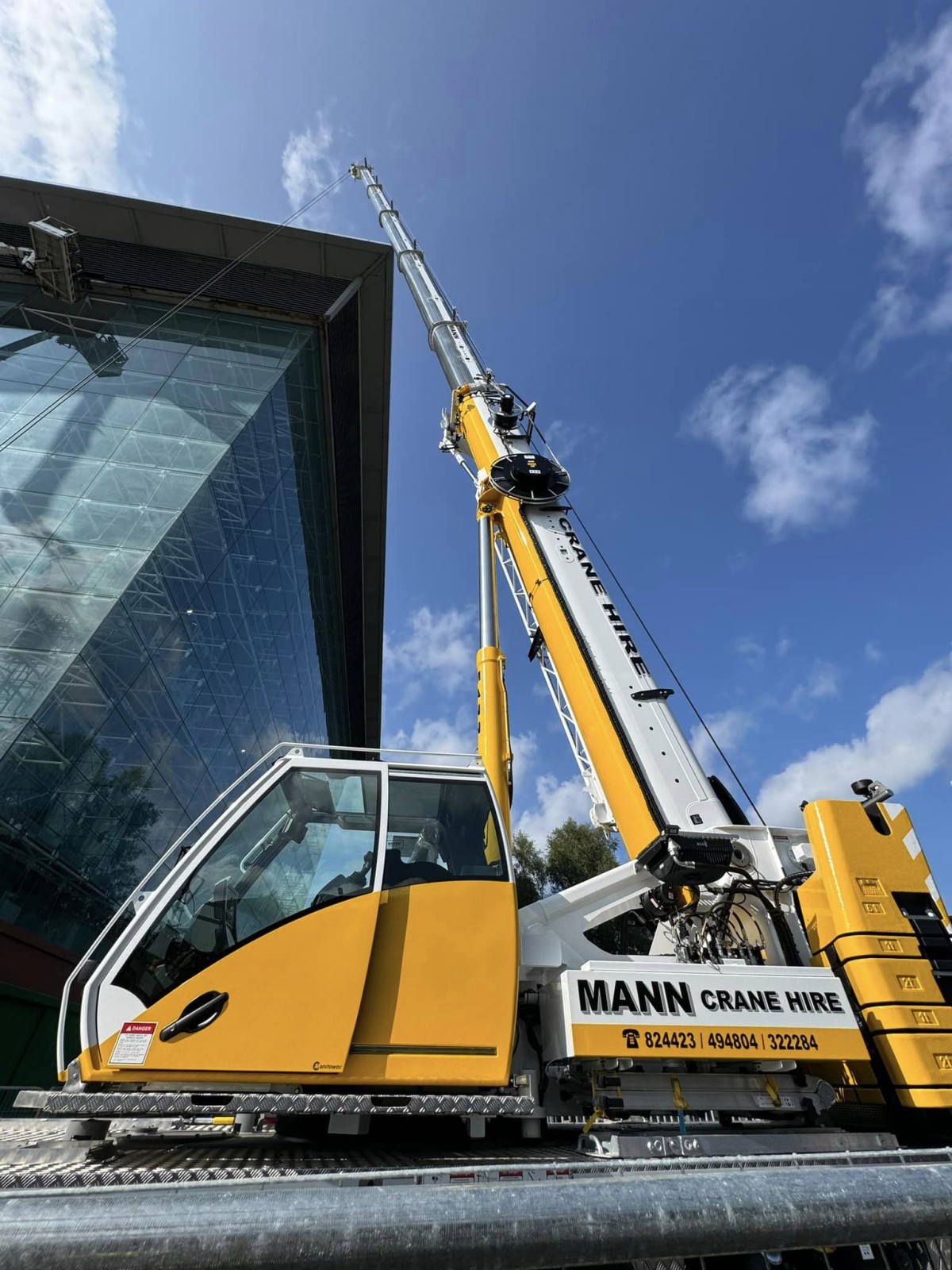Home \ International \ Technical contribution: dynamic ground compaction and how it works
Technical contribution: dynamic ground compaction and how it works
12/04/2019
Pubblicato da Redazione

Duty cycle cranes are used around the world for all sorts of different applications.
Duty cycle cranes are used around the world for all sorts of different applications. Thanks to their high load capacity they can also be used for dynamic ground compaction. This includes the systematic improvement of the ground's bulk density by continually dropping heavy weights.
The ground needs to be compacted even more in preparation for construction and to prevent cavities forming. Dynamic ground compaction is a tried and tested technical and yet simple procedure. It involves repeatedly dropping a heavy weight from a height of up to 30 m onto the ground. The kinetic energy that is released on impact leads to compaction of the ground and has an effect for a depth of between 3 m and 10 m. The degree of compaction depends on the size of the falling weight, the height it is dropped from and the spacing between the impact points.
In practice this usually means a steel or concrete block, typically square or circle in shape, being dropped from a large crawler crane using its freefall winch, then being hoisted up again and the process repeated.
Why duty cycle cranes?
Why are duty cycle cranes suited to this task? The basic construction design and performance of robust Sennebogen crawler cranes means that they are already suited to lifting large dynamic loads. The freefall winch is necessary to ensure that the weight falls unchecked and transfers the full amount of kinetic energy into the ground. Initially the cable is pulled freely through the winch by the weight, and shortly before impact it checks the load in a controlled manner, in order to prevent the cable becoming slack and unwinding completely. Finally, the cable is either automatically or – once activated – reeled back up and the process begins again. The ground compaction and the process are controlled by software so that the crawler crane can operate repeatedly and fully automatically.
The process of dynamic ground compaction is often used in practice to increase the load-bearing capacity of the ground beneath construction sites. It is also used to prevent settling when digging foundations. Finally, the process is also used to improve the compaction of infill and in land reclamation. The Sennebogen heavy duty cycle crawler cranes from 670 HD to 6140 HD are particularly suited to dynamic ground compaction.

Ultime notizie di Sennebogen Maschinenfabrik GmbH

Lifting
12/01/2024
The last Sennebogen 880 EQ leaves the factory
Sennebogen is retiring the 880 EQ balance material handler a...

Demolition
15/11/2023
Industrial deconstruction in the production halls of a die casting manufacturer
The Sennebogen 825 demolition excavator with its long reach...

Components
11/10/2023
Digital services at Sennebogen
Networking and data-driven optimization of machines for the...

Lifting
02/10/2023
71 years of Sennebogen at "WE SHOW 71"!
In this year’s in-house exhibition, the “WE SHOW 71” the lat...

Lifting
27/07/2023
Sennebogen opens new steel plant in Hungary to meet growing demand
Sennebogen is continuing its growth strategy and expanding i...

Earthmoving Machinery
30/06/2023
Sennebogen: Building demolition in two days with 45 t demolition excavator
A warehouse silo has been dismantled piece by piece by the S...
Altri International

International
25/11/2024
New Grove GMK3060L-1 drives busy schedule for Mann Crane Hire
• Mann Crane Hire selected the GMK3060L-1 for its class-lead...

International
25/11/2024
Prinoth Unveils Expanded Production Facility in Granby, Canada
Prinoth held an event to announce the official opening of it...

International
23/11/2024
GPMat International takes delivery of two Raimondi T147s residential development in the South of France
- Official agent of France expands its product lineup with t...

International
22/11/2024
Sarens acquires additional SCHEUERLE SPMT K24 modules
renowned for its expertise in crane rental services, heavy l...
International
22/11/2024
Five WOLFF cranes modernize Oslo’s Ulven district
With a total of five WOLFF cranes of type 7534.16 Clear, Wol...

International
21/11/2024
Kleemann: New compact crusher used for recycling
Impact crusher MOBIREX MR 100i NEO impresses during operatio...







































